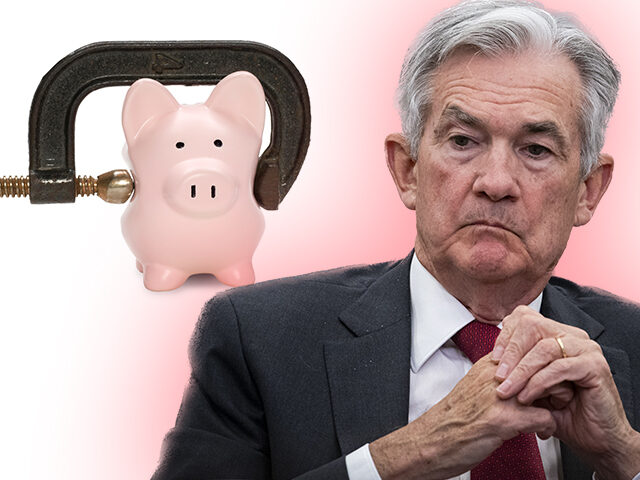The Fault Is in R*s
“The fault, dear Brutus, is not in our stars, but in ourselves, that we are underlings.”
William Shakespeare has Cassius utter these words to Brutus during the feast of Lupercus, the Roman god of shepherds, that was held each year at the start of the third week in February. It is more or less the start of the conspiracy that ends in the assassination of Julius Caesar.

John Gielgud as Cassius (left) and James Mason as Brutus in the 1953 film of Shakespeare’s “Julius Caesar.” (John Springer Collection/CORBIS/Corbis via Getty Images)
Like many lines from Shakespeare’s plays, this one is often taken out of context and presented as a kind of eternal wisdom gilt by its association with the Bard. Neither a borrower nor a lender be! There is nothing either good or bad, but thinking makes it so. Brevity is the soul of wit. And so on.
It often does but really should not escape notice that these lines come from the mouths of very questionable characters and are not spoken by Shakespeare himself. Polonius, who appears to be both a bit of a fool and the chief intelligence officer of Denmark, gives his son the advice about avoiding involvement in credit. He’s also the speaker about that line about brevity—and he says it in the middle of Shakespeare’s longest play, Hamlet.
Cassius commits a kind of suicide during the civil war that follows Caesar’s assassination, ordering his own underling to stab him with the very sword he used to stab Caesar. So this champion of human agency over fate meets his end in a state of fatalistic despair over the outcome of a conflict set off by his own scheming.
Sometimes the fault is in our stars. That is to say, we can be misled by believing we can overcome destiny through the force of our own agency.
The Neutral Rate Also Rises
Or, in the case of the Federal Reserve, the fault is likely in r*s. Economists use the abbreviation r* to refer to the neutral rate of interest or sometimes “natural” rate of interest. That, in turn, refers to an unknown, unobservable, and ever-changing short-term policy rate that is neither accommodative nor restrictive. If you are wearing tweed, you are permitted to call it the “long-run equilibrium rate of interest.”
The consensus among people who pay attention to monetary economics is that a decline in the neutral rate of interest explains the fall in the prevailing rate of interest over the past few decades. The idea is that policy rates that would have been very accommodative a decade or two ago could evolve into restrictive rates because the neutral rate had fallen.
You can tell what the Fed thinks is the neutral rate of interest by looking at the long-term projected federal funds rate. The Fed says this long-term rate is the rate that is compatible with full employment and stable inflation. For years—through the Trump boom, the pandemic, the post-pandemic recovery, the Bidenflation episode, and even now—the Fed has kept this stuck at 2.5 percent.
If the neutral rate is 2.5 percent, then the current fed funds rate of 5.25 to 5.50 percent looks very restrictive. One of the reasons many analysts expect the Fed will cut its target is because they view this as “normalization,” which is to say a return toward the much lower neutral rate. If inflation is no longer a threat, there’s no need for a rate this restrictive.
The behavior of the economy throughout the Fed’s recent hiking cycle, however, is very likely an indicator that the neutral rate has moved higher. Even before the pandemic, grand economic poobahs like Janet Yellen, Mario Draghi, and Mark Carney were all intimating that r* was rising.
The pandemic might have suppressed evidence of that for a time, but now it does seem the economy can operate at a high rate of growth with interest rates that would have been seen as highly restrictive in the pre-pandemic era.
Minnesota Fed President Neel Kashkari made a similar observation in a recent essay.
These [recent strong economic] data lead me to question how much downward pressure monetary policy is currently placing on demand.
But the data are not unambiguously positive, and there are some signs of economic weakness that I take seriously, such as auto loan and credit card delinquencies increasing from very low levels and continued weakness in the office sector of commercial real estate.
This constellation of data suggests to me that the current stance of monetary policy, which, again, includes the current level and expected paths of the federal funds rate and balance sheet, may not be as tight as we would have assumed given the low neutral rate environment that existed before the pandemic. It is possible, at least during the post-pandemic recovery period, that the policy stance that represents neutral has increased. The implication of this is that, I believe, it gives the FOMC time to assess upcoming economic data before starting to lower the federal funds rate, with less risk that too-tight policy is going to derail the economic recovery.
In short, while Fed Chair Jerome Powell and Wall Street believe the Fed will bring interest rates back to what they think is the neutral rate, r* may have other plans.

COMMENTS
Please let us know if you're having issues with commenting.